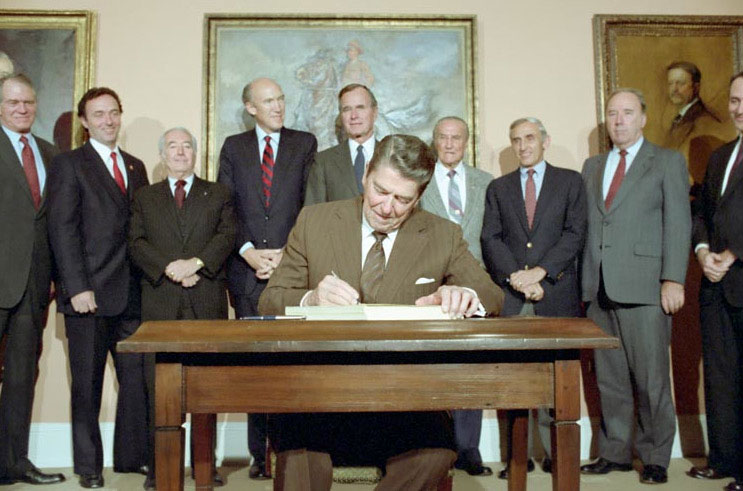Tax Reform (Cuts)

Reagan Signing
The Reagan Administration passed two major tax reform packages. The first in 1981 called the Economic Recovery Tax Act of 1981, and it was planned to decrease taxes. The second called the Tax Reform Act of 1986 was supposed to be revenue neutral, but it resulted in a significant decrease in taxes.
The Economic Recovery Tax Act of 1981 was designed to lower taxes. Its supporters promised that if the tax rates were decreased the economy would grow rapidly and thus any decrease in taxes would be balanced by the economic growth and that economic growth would more than pay for the tax decrease. That was the basis of Supply-side economic tax policy.
The Act lowered the top income rate from 70% to 50% and the bottom rate dropped from 14% to 11%. The act also lowered estate taxes and lower corporate income taxes. The bill was signed into law by President Reagan on August 13, 1981. The effect of the act was a rapid increase in the federal budget that caused interest rates to spike and the stock market to sink. The Federal budget deficit grew by 6%. As a result, the next year the Tax Equity and Fiscal Responsibility Act of 1982 were passed. It rescinded some of the tax cuts and closed loopholes to try to bring in more revenue.
On October 22, 1986, the Tax Reform Act of 1986 was passed. It was designed to be revenue neutral while simplifying the tax code. Under the act, the top rates were decreased from 50% to 38.5%. The number of brackets was, and individual deductions were increased. To make up for the loss of taxes were raised on businesses. Theact, however, was an increased budget deficit.
 >
>